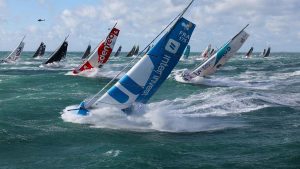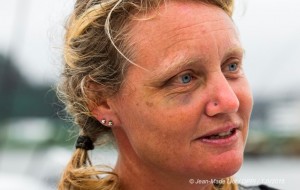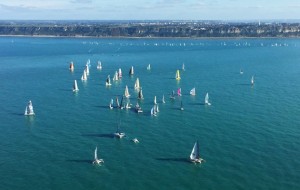Thomas Ruyant and Morgan Lagravière on For People this morning took first place in the Transat Jacques Vabre Normandie Le Havre in the IMOCA class. The win firmly establishes Ruyant…
Transat Jacques Vabre
Le Cléac’h and Josse win the 2023 Transat Jacques Vabre
French duo Armel Le Cléac’h and Sébastien Josse sailing Maxi Banque Populaire XI have won the Transat Jacques Vabre 2023, crossing the finish line at 18:19hrs local time (22:19hrs UTC)…
Transat Jacques Vabre 2023: IMOCA 60s are final fleet to start
The Transat Jacques Vabre 2023 officially started on Sunday 29 October, but with a particularly strong depression scheduled to cross the fleet on Wednesday 1 November, the decision was made…
Transat Jacques Vabre: Sunday start a possibility for IMOCAs
The start of the Transat Jacques Vabre in Sunday 29 October 2023, only three of the scheduled four fleets got underway, due to a severe forecast in the Atlantic. Now,…
‘Boat breaking’ depression disrupts Transat Jacques Vabre start
Yesterday’s scheduled start for the Transat Jacques Vabre – the double-handed race across the Atlantic from Le Havre to Martinique – partially got away on Sunday 29 October, but the…
How to follow the Transat Jacques Vabre 2023
The Transat Jacques Vabre is one of the ultimate tests of short-handed racing, a double-handed dash from France that sees many of the world’s top racing machines take on the…
5 reasons to follow the 30th anniversary Transat Jacques Vabre
The Transat Jacques Vabre is one of the ultimate tests of short-handed racing, a double-handed dash from France that sees many of the world’s top racing machines take on the…
Extraordinary boats: Flo – Florence Arthaud’s iconic 60ft trimaran
There are many iconic raceboats, but few capture the feeling of an era as much as the 60ft trimaran in which Florence Arthaud won the 1990 Route du Rhum. She…
Transat Jacques Vabre: lessons from the experts
Two boats achieved stunning victories in the latest edition of the Transat Jacques Vabre, establishing leads before the halfway mark that they extended to the finish: the 30-metre Ultim trimaran…
Hugo Boss: Sailing on board Alex Thomson’s £6million foiling machine
“What’s my speed? What’s the speed? What’s the boatspeed now?!” Alex Thomson hollers into a microphone. Thomson, at the helm of his brand new Hugo Boss, is pumped. As we…
Alex Thomson’s Hugo Boss forced out of Transat Jacques Vabre after collision damage
The first major test for Vendée Globe contender Alex Thomson’s new IMOCA 60 Hugo Boss has ended with Thomson jettisoning the yacht’s keel after hitting a submerged object during the Transat…
Blog: A final gritty diary entry from Pip Hare as she completes the Transat Jacques Vabre
The 42 double-handed crews lined up at the start of the Transat Jacques Vabre on Sunday 25th October to commence the 5400 miles journey from Le Havre, France to Itajai…
Updated: Damage, retirements and a capsize as Transat Jacques Vabre meets heavy weather
Updated: Wednesday 28th October 1300 GMT 35 of the entry of 42 boats are still heading for Itajaí. This year’s Transat Jacques Vabre is proving to be very challenging for…
‘Huge waves, 30+ knots, freezing and very, very wet’ Pip Hare blogs from the Transat Jacques Vabre
Tuesday 27th October: 1700 GMT I’m going to keep this short as we have a bit going on out here, but hello from a wet and wild Concise 2. It’s…
Gallery: A sunny send-off for the Transat Jacques Vabre fleet as 42 yachts begin 5400 mile race
Our Contributing Editor Pip Hare is sailing onboard Class 40 yacht Concise 2 with co-skipper Phillippa Hutton-Squire. She is blogging about their experience, take a read here. You can also…

















